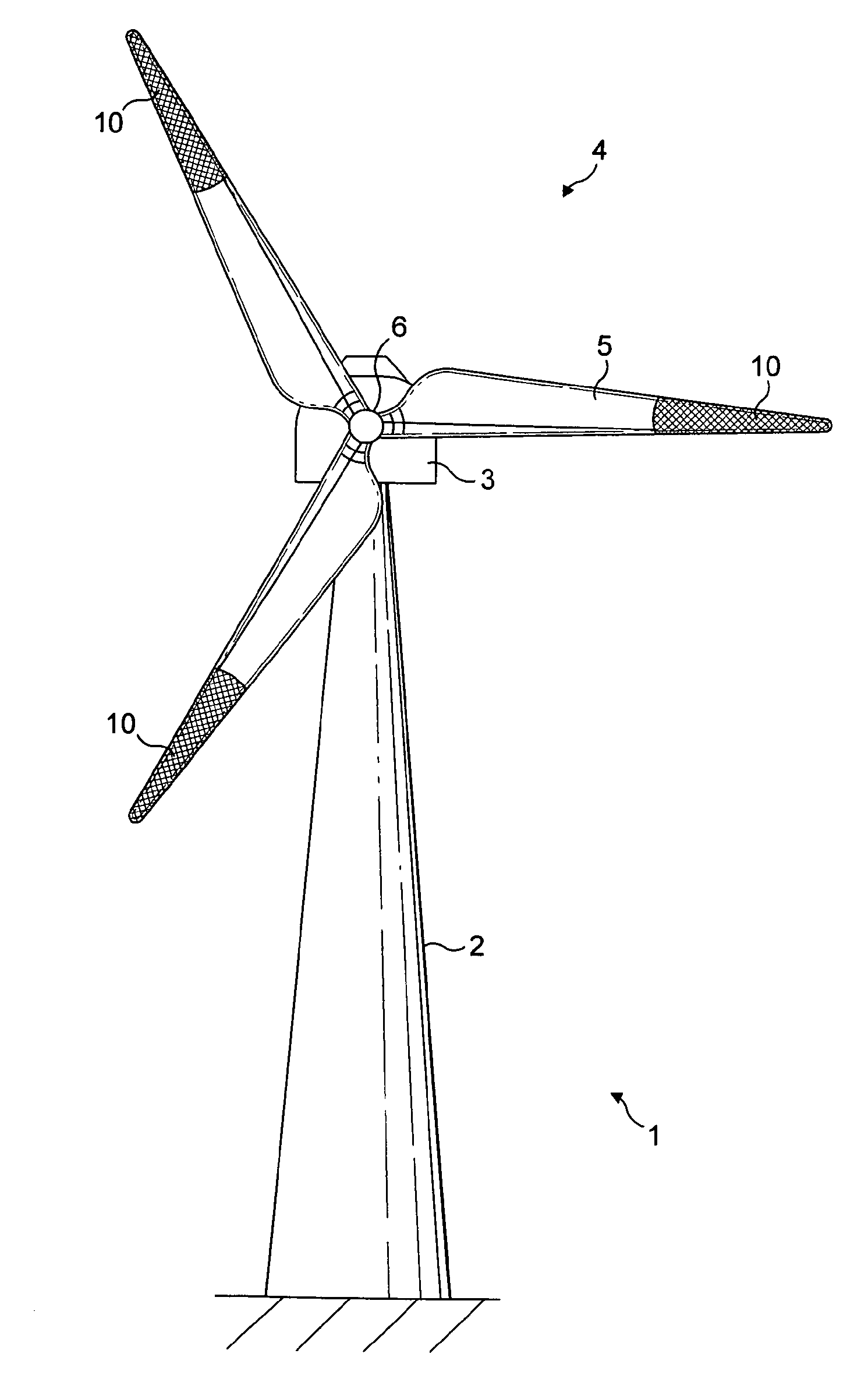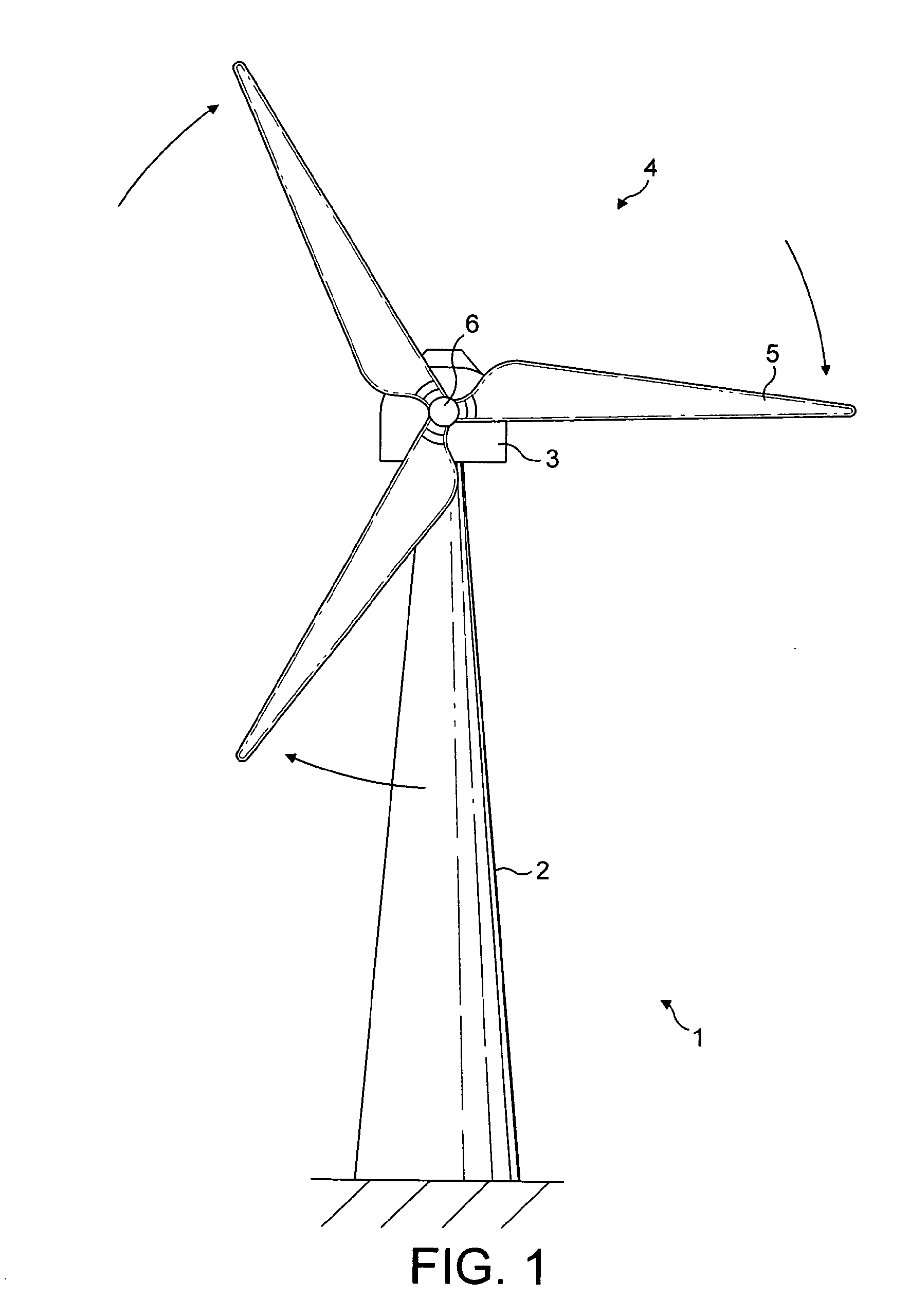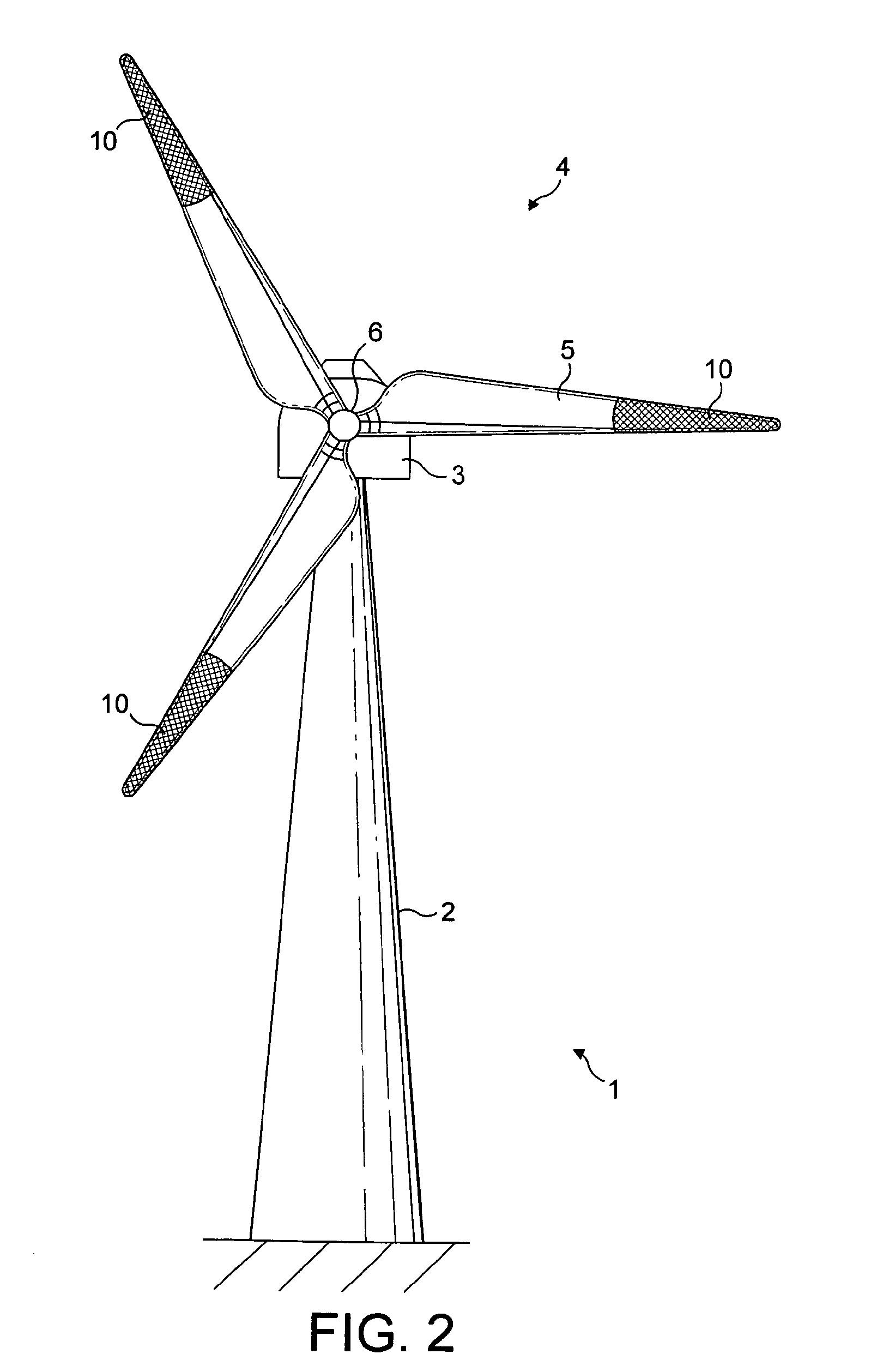Anti-oscillation apparatus and technique for securing wind turbine blades against oscillations
a technology of oscillation and anti-oscillation apparatus, which is applied in the direction of propellers, sustainable buildings, motors, etc., can solve the problems of wind turbine blade structure damage that is costly and time-consuming to repair, oscillation of edge wise blades, etc., and achieves the effect of easy attachment to the blad
- Summary
- Abstract
- Description
- Claims
- Application Information
AI Technical Summary
Benefits of technology
Problems solved by technology
Method used
Image
Examples
Embodiment Construction
[0028]A first example of the invention will now be described in more detail with reference to FIGS. 2 and 3 of the drawings.
[0029]The example anti-oscillation apparatus comprises a sleeve 10 that is fitted over the tip of a wind turbine blade 5 when the blade is in a stationary position. Attachment of the sleeve 10 can be carried out in situ when the wind turbine blades of an operational wind turbine have been locked in position for maintenance or repair. Alternatively, the sleeve 10 can be attached to the blade 5 in the factory, prior to installation of the blade 5 on the wind turbine tower 2, and before the wind turbine is connected to the grid to output electricity. In both cases, therefore, the wind turbine can be thought of as being in a non-operational mode. Once the sleeve is in place, the blade can be unlocked and can idle in a feathered position, if desired.
[0030]The construction of an example anti-oscillation sleeve 10 is shown in more detail in FIG. 3. The sleeve 10 compr...
PUM
 Login to View More
Login to View More Abstract
Description
Claims
Application Information
 Login to View More
Login to View More - R&D
- Intellectual Property
- Life Sciences
- Materials
- Tech Scout
- Unparalleled Data Quality
- Higher Quality Content
- 60% Fewer Hallucinations
Browse by: Latest US Patents, China's latest patents, Technical Efficacy Thesaurus, Application Domain, Technology Topic, Popular Technical Reports.
© 2025 PatSnap. All rights reserved.Legal|Privacy policy|Modern Slavery Act Transparency Statement|Sitemap|About US| Contact US: help@patsnap.com



